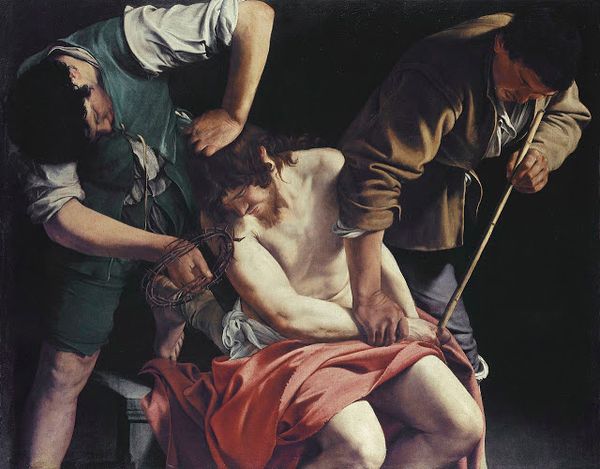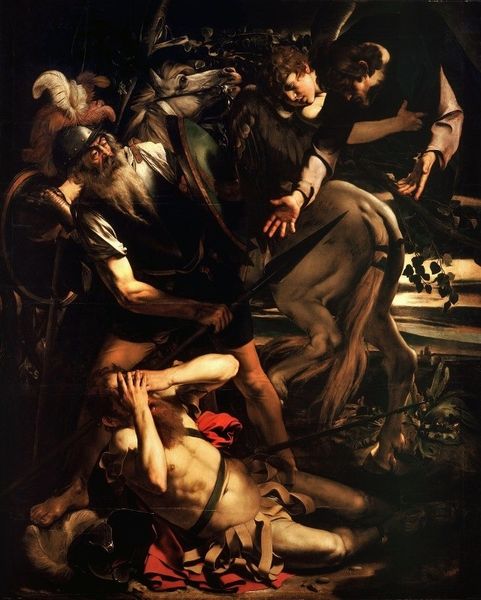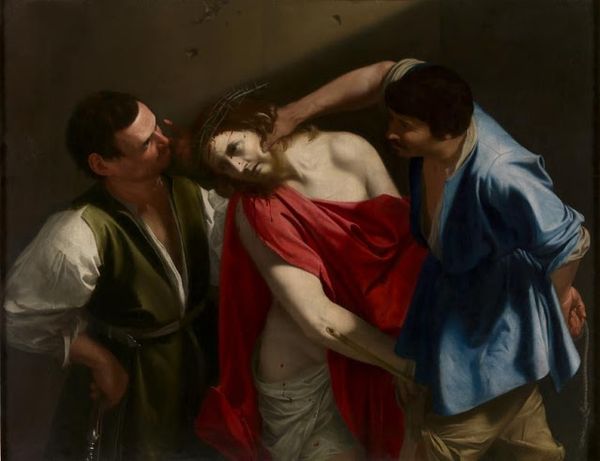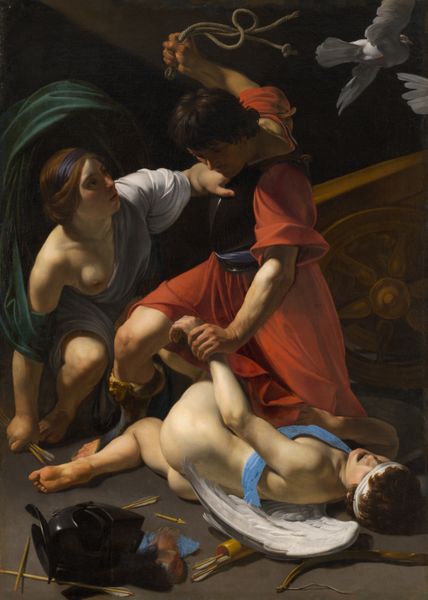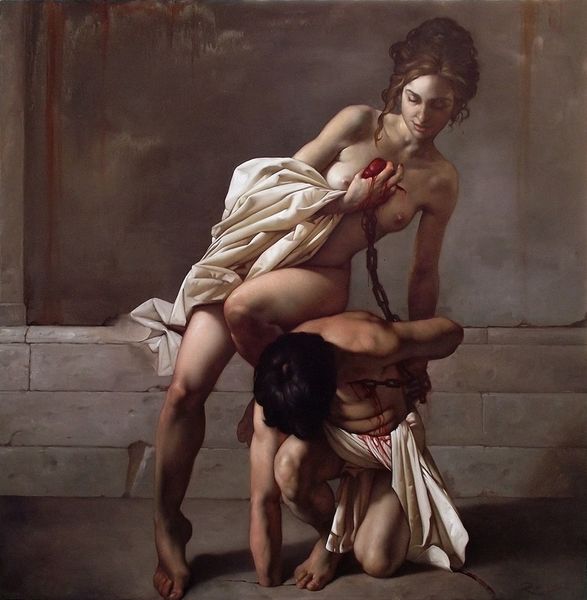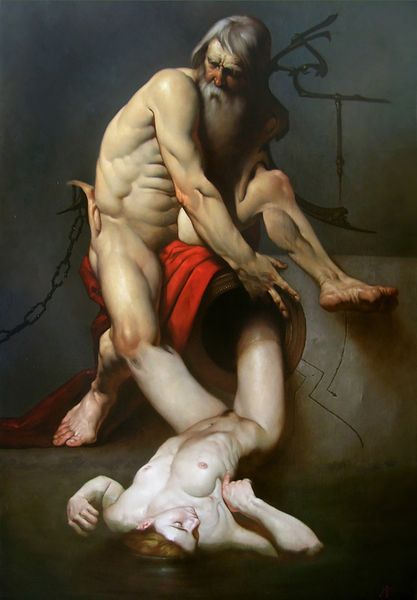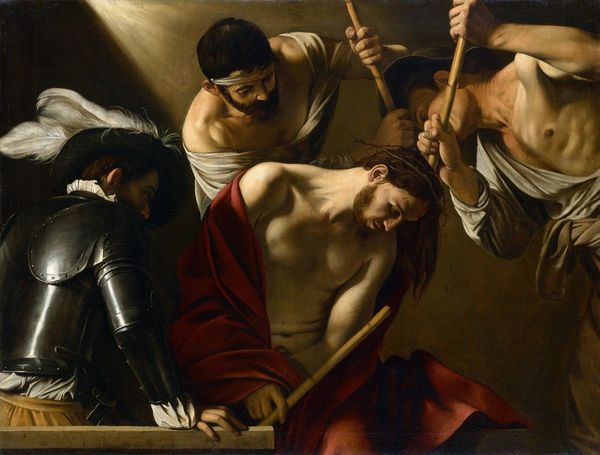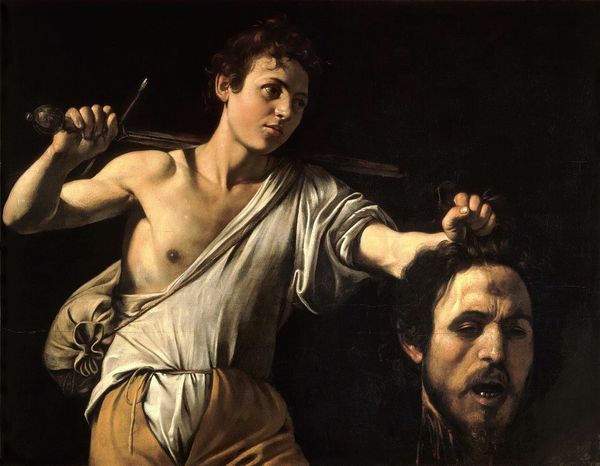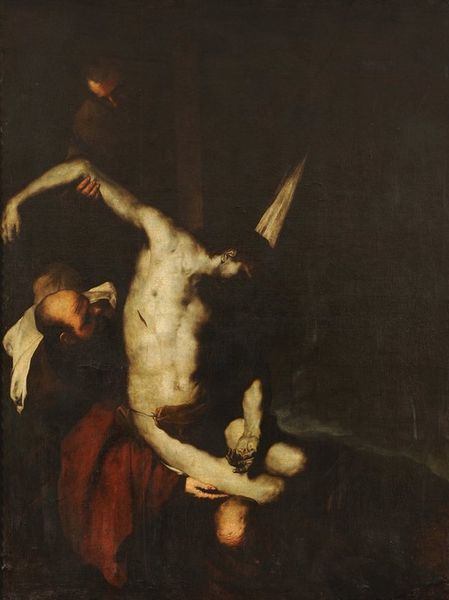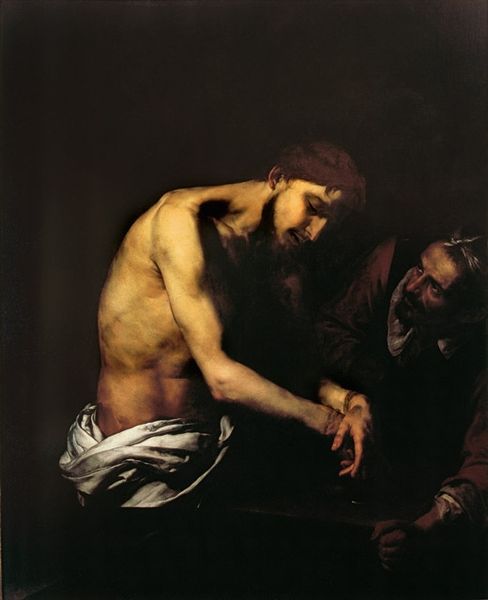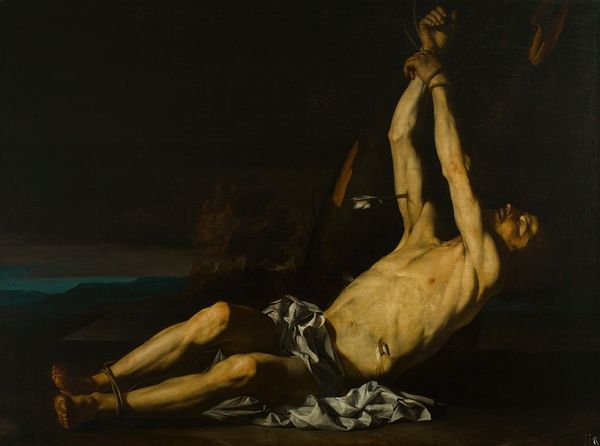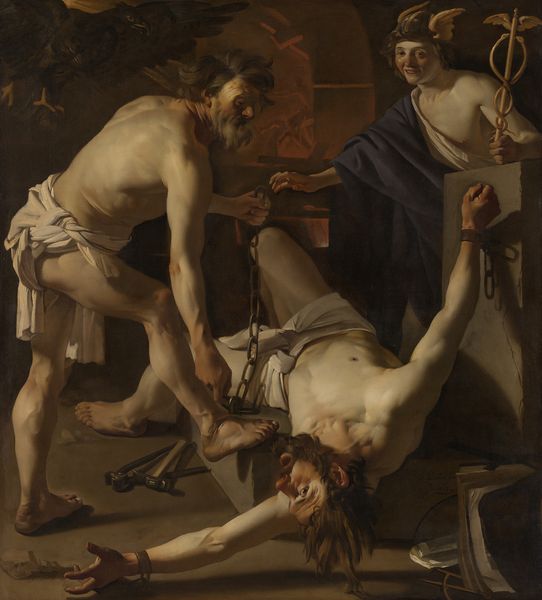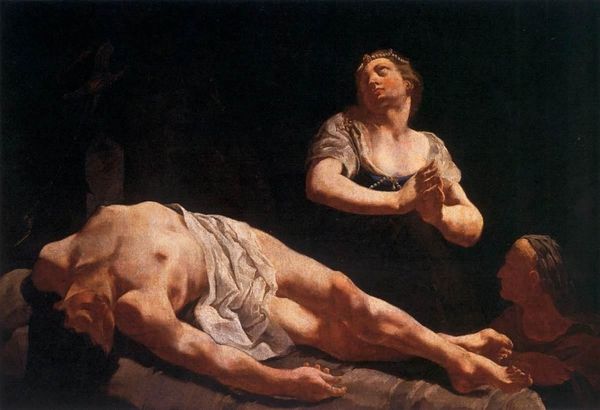
oil-paint
#
portrait
#
baroque
#
oil-paint
#
figuration
#
chiaroscuro
#
history-painting
#
italian-renaissance
Copyright: Public Domain: Artvee
Curator: This striking work is Caravaggio’s “David and Goliath,” created around 1600 using oil paint. Editor: My first impression is visceral—the drama is overwhelming. The contrast between light and shadow immediately grabs you. There's something undeniably physical about it, too. Curator: Indeed. Caravaggio's masterful use of chiaroscuro emphasizes the raw emotionality. It's a Baroque characteristic, using light to create drama, and in this case, amplifying the psychological weight of the scene. We must think of David here not just as the victorious hero, but consider the impact on his still-developing selfhood as a child who has committed an irreversible violent act. Editor: Absolutely. You can almost feel the texture of Goliath’s skin. This moment seems so intimately captured. Consider, though, what material resources Caravaggio relied on to stage that level of detail. Where did that impressive sword originate? What type of dye saturated the fabrics we glimpse? These details matter. Curator: It does force us to think beyond the myth itself, and to grapple with the lived reality of conflict and the material means required to execute it. He often favored depicting biblical heroes and saints as common people. Here, he has cast a gritty David kneeling above the giant's severed head, conveying youth burdened with experience. How might gender have shaped David's perceived status? We have a young person having to undertake such brutal behavior that historically has been largely viewed through a male lens of leadership, war, strength. How much has his identity become consumed with masculinity by being placed in this environment? Editor: I agree. Furthermore, Baroque art was a deliberate departure from Renaissance styles in that its intent was not about ideal form or composition. I wonder: how accessible were the pigments he was working with, who were they intended for, and how would this affect the cost and wider circulation? Thinking about materials and circulation, what happens to this art in different times and places? Curator: I am prompted to reflect on themes of vulnerability and resilience depicted here in contrast of bodies. David may appear dominant, yet there is softness in his posture. Similarly, though defeated, Goliath maintains nobility, if in death. Both standpoints encourage empathy which may offer fresh ways of reconsidering conventional narratives on power. Editor: It is indeed about finding new interpretations of classical ideas. Thinking materially also encourages engagement, leading one to question what art’s intended use can be and should be. Curator: By combining our methods, a broader discourse unfolds and reveals the intricate threads woven throughout “David and Goliath”, sparking dialogue across different periods. Editor: Indeed, our shared analyses, blending focus and perspective, open up so much to broader investigation.
Comments
No comments
Be the first to comment and join the conversation on the ultimate creative platform.
